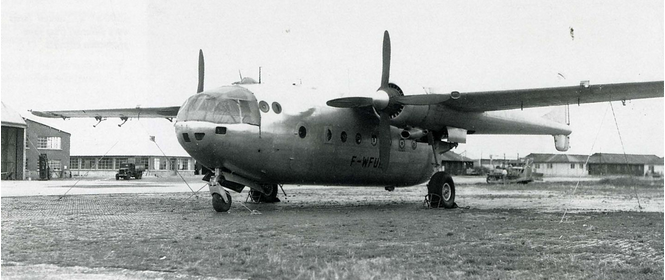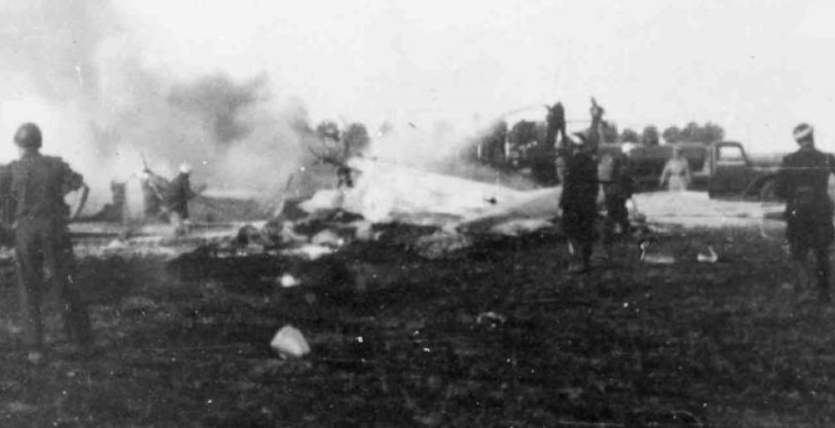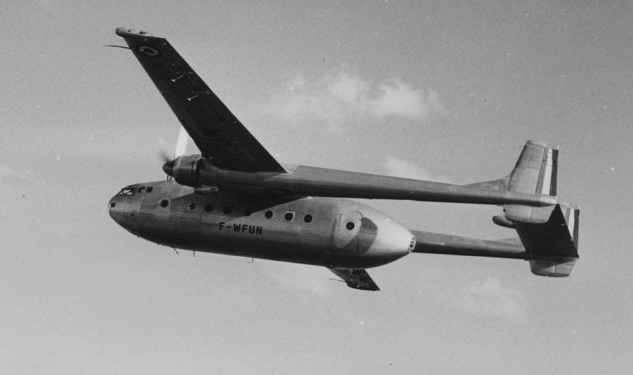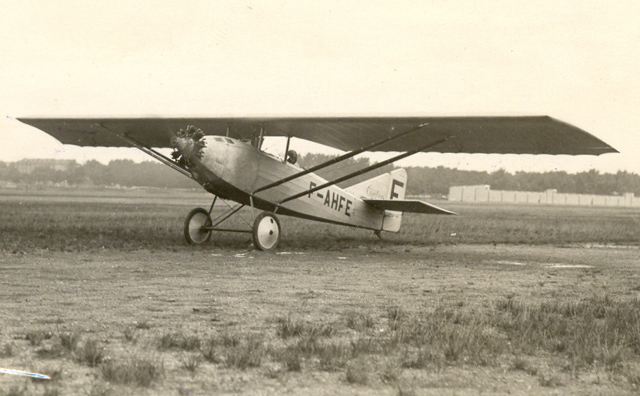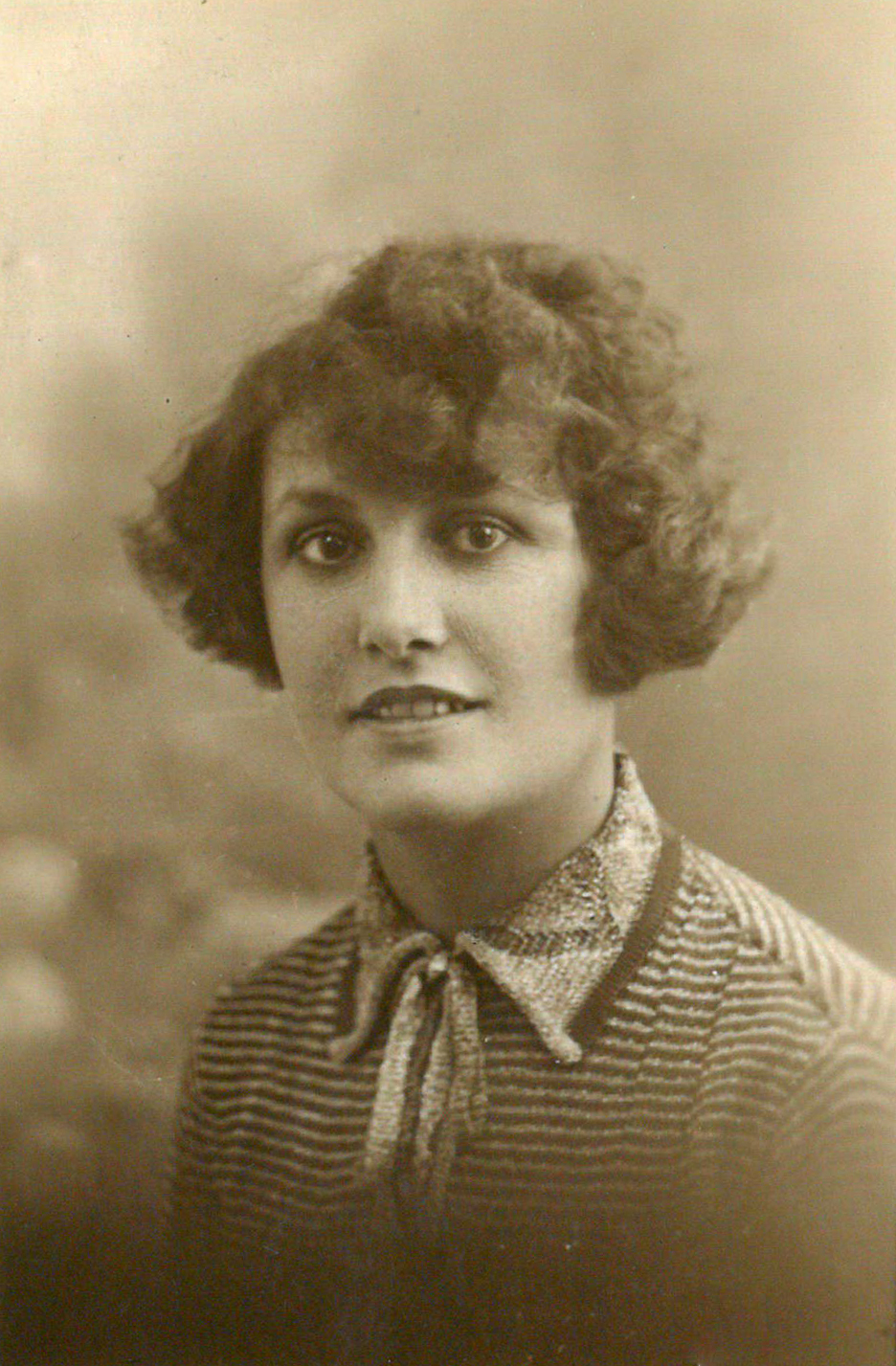
28–29 July 1929: Maryse Bastié was the first woman to set a Fédération Aéronautique Internationale (FAI) world aviation record. She took off from the Aéroport de Paris-Le Bourget at 5:18:15 a.m., 28 July 1929, and landed at 8:05:45 a.m., 29 July. She had remained airborne for 26 hours, 47 minutes, 30 seconds.¹

The official Fédération Aéronautique Internationale records database credits Mme Bastié with eight world records for distance and duration.
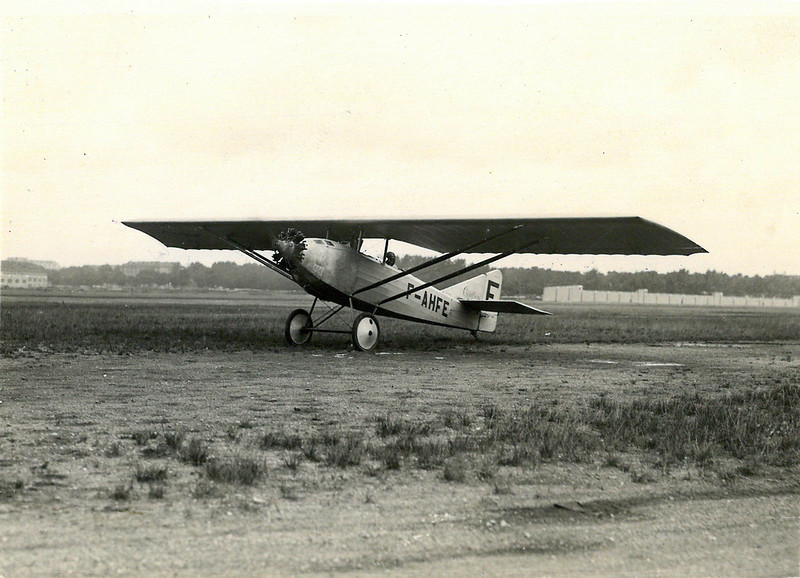

The C. 109 had a length of 6.440 meters (21 feet, 1.5 inches), wing span of 11.50 meters (37 feet, 8.8 inches) and height of 2.530 meters (8 feet, 3.6 inches). Its empty weight was 330 kilograms (727.525 pounds) and gross weight, 532 kilograms (1,173 pounds).
The standard C. 109 had a fuel capacity of 57 liters (15 U.S. gallons), and carried 15 litres (4 U.S. gallons) of lubricating oil for the engine. Its maximum speed was 120 kilometers per hour (75 miles per hour).
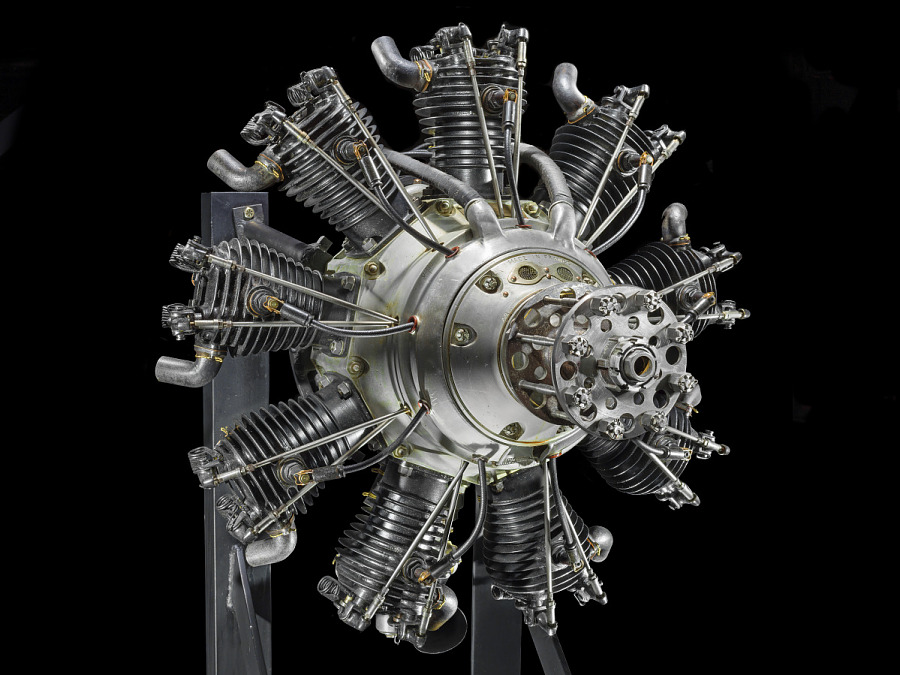
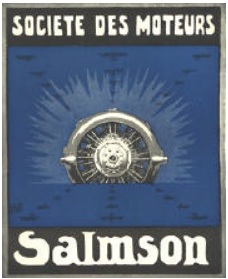
F-AHFE had set two other FAI world records. On 25 October 1927, Raymond Delmotte flew over a closed circuit from Villacoublay to Saran in France, for a distance of 1 535,20 kilometers (953.93 statute miles).² Two days later, 27 October 1927, Max Knipping flew from Le Bourget, Paris, France, to Königsberg, Germany, a distance of 1 581,84 kilometers.³
The airplane was first registered to M. Cuadron as F-ESDE, 06.11.25. It was the sold to M. Bastié at Issy. Later, Guy Bart, Chennevieres-sur-Marne; André Lemoine, Reims; and Pierre Gaston Lapanne at Nancy.
Marie-Louise Bombec was born at Limoges, Haute-Vienne, France, 27 February 1898. She was the daughter of Joseph Bombec and Celine Filhoulaud. She married Babtiste Gourinchas at Limoges, 11 February 1915. Their son, Germain Gourinchas, was born 22 September 1915.
In 1918, Mme Gourinches was employed as a secretary-typist at the Limoges electric company.
Marie-Louise and her husband separated 29 May 1920, and divorced 24 December 1920. Germain died of typhoid fever, 6 June 1935, in Ferryville (now known as Manzil Būrgībah), Bizerte, Tunisia.
On 22 May 1922, Mme Gourinches married a pilot, M. Louis Bastié, at Limoges. With her husband, she ran a shoe store in Cognac.
After taking instruction from Guy Bart, she first soloed 8 September, 1925, at Bordeaux, Gironde, Aquitaine, France. Mme Bastié earned Brevet de Pilot N° 1036, 29 September 1925.
On 15 October 1926, she received a telegram informing her that her husband, Louis, had been killed.
In 1928, she officially changed her name from Marie-Louise to Maryse.
On 13 July 1928, she flew her Caudron C.109, F-AHFE, from Le Bourget Aerodrome, Paris, France, to Trzebiatów, Pomeranina, a distance of 1,058 kilometers (657 statute miles).
On 11 October 1928, she became to first woman in France to obtain a public transport license, N° 1136. She was only the second woman in France to earn a professional pilot’s license.
On 28 July 1929 Maryse Bastié, flying a Caudron C.109 parasol-winged, strut-braced monoplane, F-AHFE, to set a Fédération Aéronautique Internationale (FAI) world record for duration of 26 hours, 47 minutes, 30 seconds, at Le Bourget. (FAI Record File Number 10446)
On 10 June 1930, she set another FAI world record for duration, 22 hours, 24 minutes, flying a Klemm L 25 I monoplane powered by an air-cooled 2.979 liter (181.77 cubic inch displacement) Salmson AD.9 nine-cylinder radial direct-drive engine, which was rated at 50 horsepower at 2,000 r.p.m. (FAI Record File Number 12337)
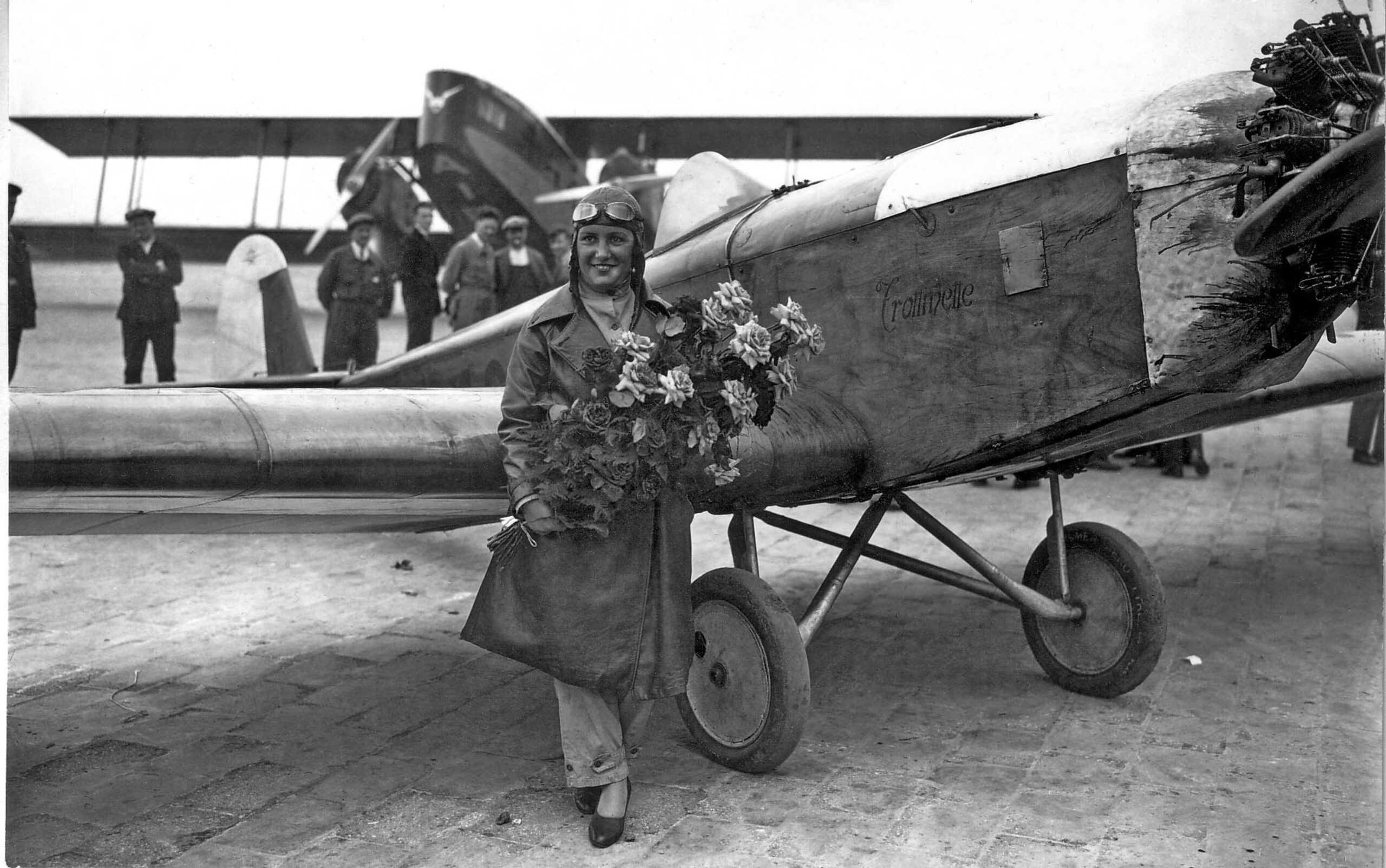
On 18 August 1930, she set another FAI world record for duration, 25 hours, 55 minutes, again flying the Klemm. (FAI Record File Number 12338)
At Le Bourget, 4 September 1930, she set two FAI world records for duration, 37 hours, 55 minutes, flying the Klemm monoplane. (FAI Record File Numbers 12339, 12341)
On 29 June 1931, Mme Bastié flew the Klemm from the Le Bourget airport, Paris, France, to Urino, Russia, U.S.S.R., to set three FAI world records for distance: 2,976,31 kilometers (1,849.39 statute miles). The duration of the flight was 30 hours, 30 minutes. (FAI Record File Numbers 12345, 12346, 14886). For this flight, she was awarded the Order of the Red Star by the Presidium of the Union of Soviet Socialist Republics.
She was awarded the Harmon Aviatrix Trophy for 1931. On 20 March 1932, Bastié was appointed Femme Chevalier de la légion d’honneur.
On 30 December 1936, Maryse Bastié flew a Caudron C.635 Simoun, F-ANXO, from Dakar, French West Africa, across the South Atlantic Ocean to Natal, Brazil, solo, in 12 hours, 5 minutes.
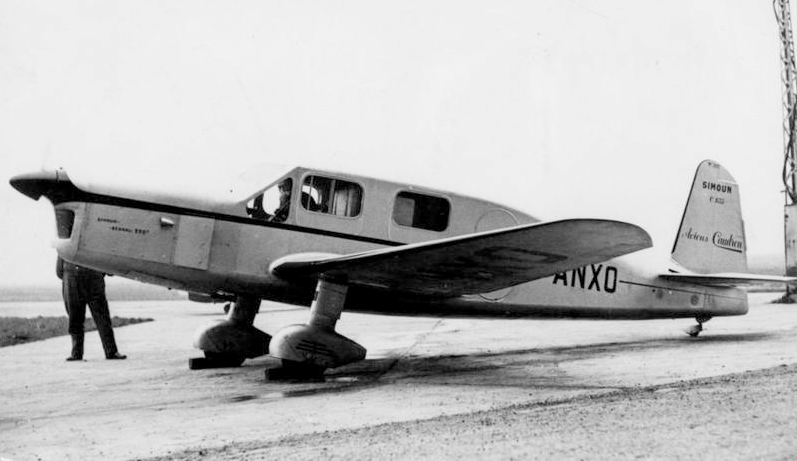
On 22 February 1937, France promoted her to Officier Ordre national de la Légion d’honneur.
During the German occupation of France, Mme Bastié was suspected of being a member of La Résistance française (the French Resistance). She was detained by the Gestapo at the Fresnes Prison, south of Paris, but was released after 15 days.
On 3 May 1944, she volunteered for l’Armee de l’air, the French air force, and was assigned as a pilot-journalist in the Minister’s office. On 24 November 1944, she was appointed a lieutenant of l’Armee de l’air. On 2 November 1945, she was assigned command of pilot schools.
On 17 April 1947, Mme Bastié was promoted to Commandeur Ordre national de la Légion d’honneur. The following month, 15 May 1947, she was promoted to Capitaine, l’Armee de l’air, with her rank retroactive to 25 May 1946.
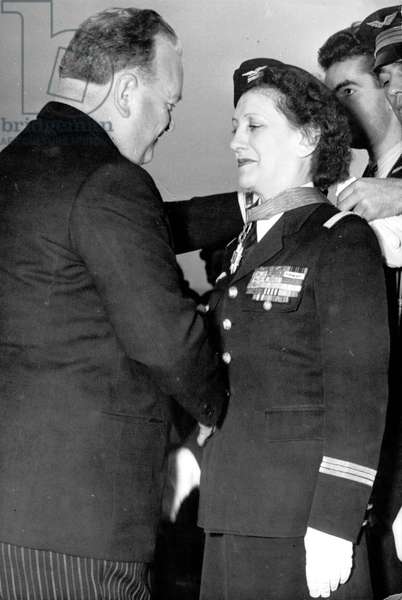
Capitaine Maryse Bastié, l’Armée de l’air, was killed 6 July 1952 when the airplane she was aboard as a passenger, the second prototype Nord 2501 Noratlas, F-WFUN, was demonstrating single engine operation crashed and burned at an air show at the Lyon-Bron Airport (LYN).
¹ FAI Record File Number 10446
² FAI Record Number 9185
³ FAI Record 9166
© 2023, Bryan R. Swopes
